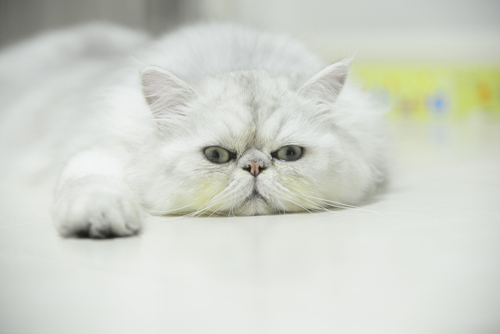|
|

Having a pedigree long haired cat can appear very luxurious. However the constant grooming and bathing that can accompany such a breed should be taken into account. Before looking into buying a longhaired pedigree cat, read the requirements for the maintenance of their coat. If this looks to be too much work, then best to select a shorthaired breed. Additionally, the ongoing maintenance for such a breed can be quite costly.
1. How often to bathe a long haired cat
Well, an obvious answer to this would be when they seem dirty. But obviously during summer (while your cat is more heavily perspiring), if they are outdoors or they have a very soft and silky coat then they will need more frequent baths. Ideally, once every 2 weeks (unless needed more frequently needed) should be ideal.
2. Where to bathe them?
Personally, a baby bath or a laundry sink is the perfect size. Be sure not to overfill the sink as many cats can panic and become overwhelmed during this time. Also make sure you keep the water warm-use your hand to check the temperature first.
Do NOT use human shampoo on cats. There are plenty of cost effective cat shampoo brands on the market. Human shampoo can be too harsh on your cat’s skin or their eyes. Longhaired cats also can need more flea treatments than shorthaired cats if they are frequently social.
4. Daily brushing
Generally, brushing a cat will feel like a slow pat (unless, they have matted and knotted fur). Because of this, twice daily brushing for longhaired cats is always advised. Additionally, if you have a cat will a fine and soft coat (known as angora fur) they might even require more brushing than this. Long hair is incredibly challenging for the cat alone to groom, so they need a lot of assistance.
5. They even might need a haircut
Due to the common presence of skin inflammation like psoriasis or eczema these cats might additional need to have their fur completely shaven back when their skin is inflamed. Additionally, cats prone to having knots will need to have these removed as soon as you notice them. Knots can be a hiding place for fleas, rendering your flea treatments pointless. Also, cats will incredibly thick fur might overheat during the summer months if you’re in a warm climate. When this occurs they need to have their fur completely clipped back, which will greatly affect their pretty appearance.
6. Home trimming
Often longhaired cats have extensive fur growing on their paws, so to avoid constant slipping over and tumbles it is also advised you regularly trim the fur on their paws as well. This fur also grows back very quickly, my veterinarian advised that this fur is best trimmed after every clean to ensure they can jump, leap and balance without hurting themselves.

In conclusion, if you wish to have a beautiful cat you’d like to take to regular shows and for breeding then maybe a longhaired cat is for you. However, if you notice you are time-poor in any way, then be intelligent and select a shorthaired and low maintenance breed (especially for first time cat owners). Additionally, inadequate grooming of longhaired cats can lead to skin infections, fleas and other parasites which can be damaging to their health. Because of this, inadequate grooming can be seen (from the authorities) as a form of animal abuse and can lead to a hefty fine.
Tag
Tag